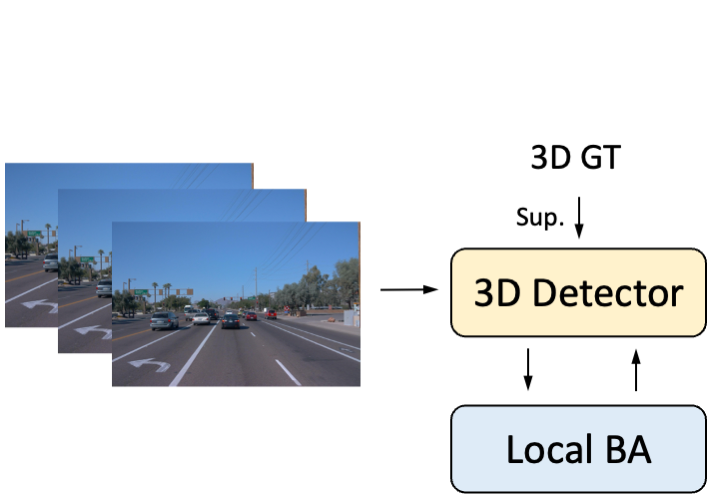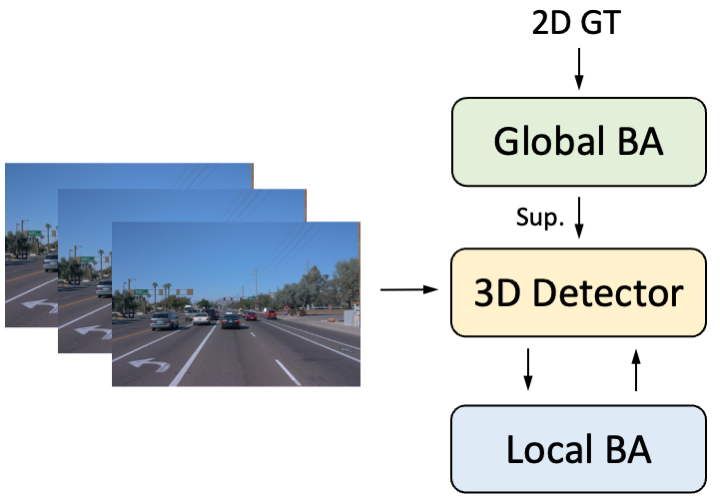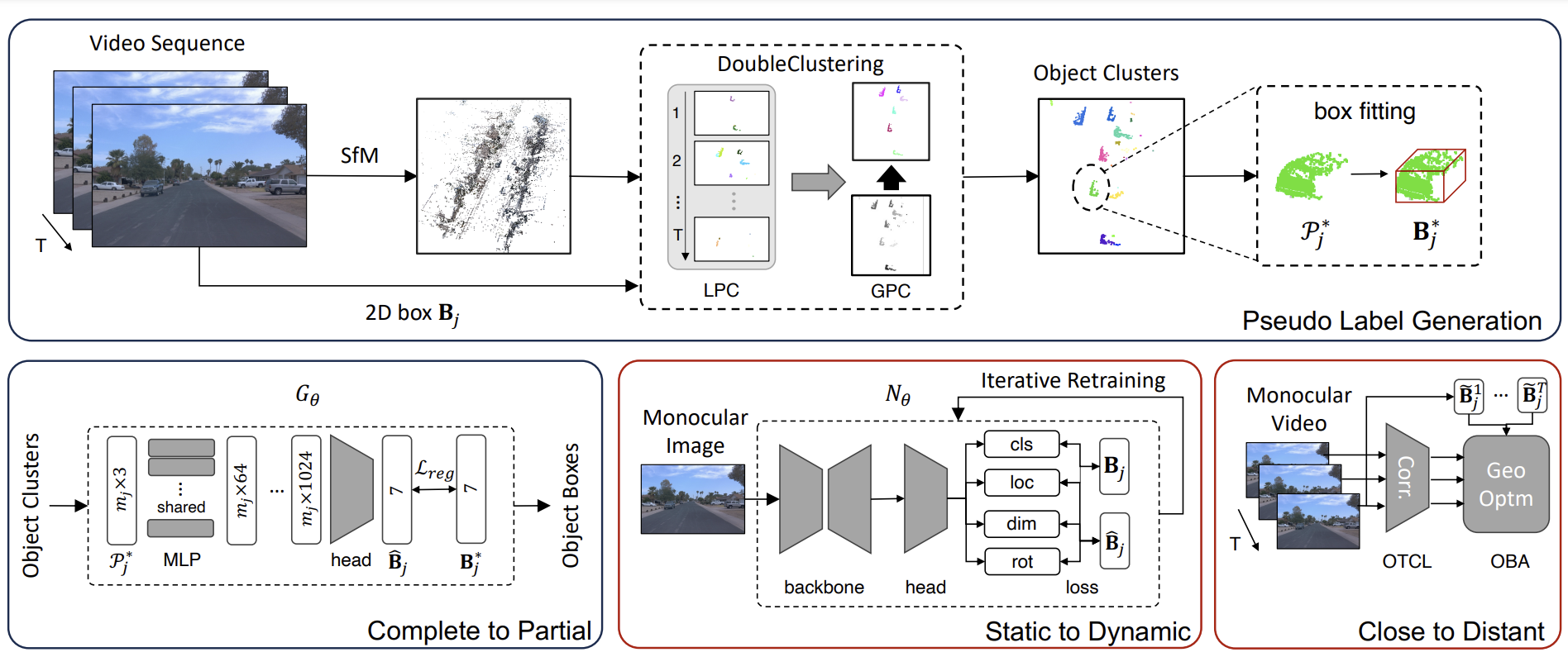
3D-fully-supervised BA-Det

2D-supervised BA2-Det (Ours)
Abstract
With the rapid development of large models, the need for data has become increasingly crucial. Especially in 3D object detection, costly manual annotations have hindered further advancements. To reduce the burden of annotation, we study the problem of achieving 3D object detection solely based on 2D annotations. Thanks to advanced 3D reconstruction techniques, it is now feasible to reconstruct the overall static 3D scene. However, extracting precise object-level annotations from the entire scene and generalizing these limited annotations to the entire scene remain challenges. In this paper, we introduce a novel paradigm called BA2-Det, encompassing pseudo label generation and multi-stage generalization. We devise the DoubleClustering algorithm to obtain object clusters from reconstructed scene-level points, and further enhance the model's detection capabilities by developing three stages of generalization: progressing from complete to partial, static to dynamic, and close to distant. Experiments conducted on the large-scale Waymo Open Dataset show that the performance of BA2-Det is on par with the fully-supervised methods using 10% annotations. Additionally, using large raw videos for pretraining, BA2-Det can achieve a 20% relative improvement on the KITTI dataset. The method also has great potential for detecting open-set 3D objects in complex scenes.
